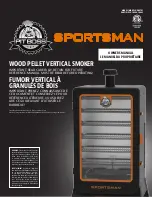
Version
:
1013081124
Instruction Manual of JTY-GD-H605 Independent
Smoke Detector
Read through these instructions before using this device to ensure correct installation and use!
I. General
JTY-GD-H605 independent smoke detector (Detector hereunder) is a smoke-sensing detector. While
monitoring, the green indicator blinks per 60 seconds. When the concentration of the smoke reaches the set point,
the detector will emit an audible
‘
Didi tick
’
repeatedly and the red indicator on the detector will remain on during
the audible signal. The detector can revert to the normal condition when the concentration of the smoke goes
lower than the set point. And it includes self-check and battery low power indicate function. The state of the
detector can be sent to Sanjiang Cloud Platform based on the international LORAWAN standard protocol. For
details of the detector access platform mode and status information, see the Sanjiang Cloud Platform related
manual.
The detector is applicable in places where fire might generate volume smoke, i.e. in industrial and civil
buildings such as in the restaurant, hotel, teaching building, office building, computer room, archives and stack
room.
II. Features and technical parameters
Working voltage: DC9V(1200mAh)
Working current:
During monitoring
<
10µA
In alarm mode
<
25mA
Impulse current
<
120mA
LEDs: in three colors (green: normal; red: fire alarm; yellow: failed)
Alarm volume:
>
80dB(at a 3 meter (9.8 ft) distance)
Environment: Temperature: -10
℃
~55
℃
Relative humidity:
≤
95%(40
℃±
2
℃
non-condensing)
Exterior size:106mm(4.2’’)
×
106mm(4.2’’)
×
46mm(1.8’’) (Length
×
Width
×
Height)
Weight: 162g
Mounting hole distance: 52-70mm
Housing material/color: ABS (white)
Standard: GB20517-2006
Areas covered: ≥40
㎡
(See the provisions in the GB 50116-2013 Code for Design of Automatic Fire
Alarm System).
III. Positioning
Where to install the smoke detector:
Residence, lounges, cafes, dance hall, hotel, apartment, inns, restaurant, etc.
Where NOT to install the smoke detector:
In the garage. Products of combustion are present when you start your car and could set off nuisance
alarms.
In front of forced air supply ducts used for heating and air conditioning, near ceiling fans, or other high
air flow areas.
In dusty areas. Dust particles may cause nuisance alarms or product failure.
In very humid areas. Moisture or steam can cause nuisance alarms.
In insect infested areas.
The kitchen and the place where smoke remains under normal circumstances.
Places where corrosion gases are likely to occur.
IV. Structural features and working principle
Detector structure diagram (see figure 1)






















